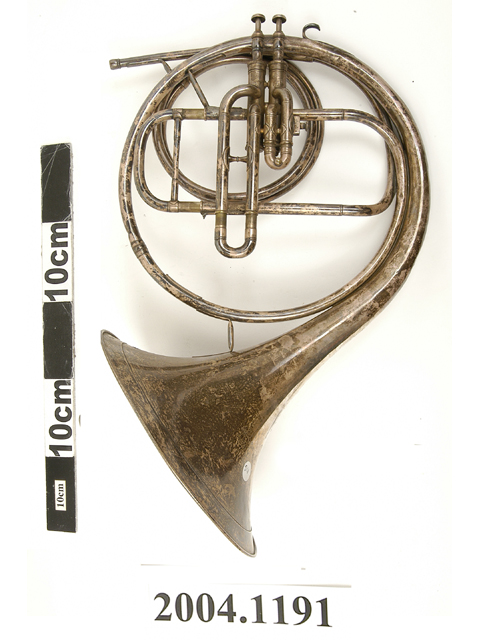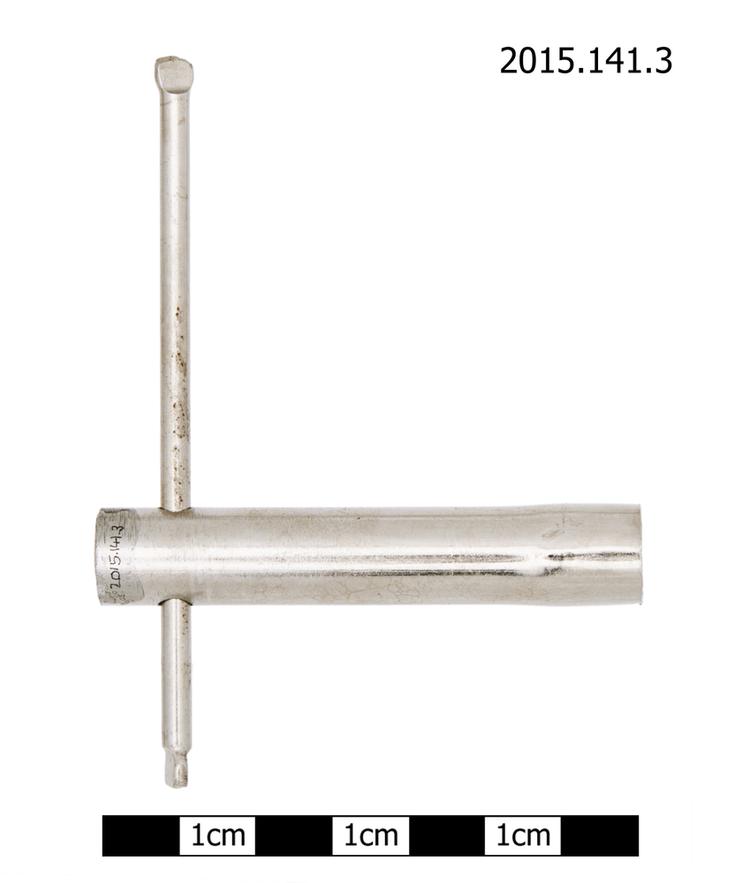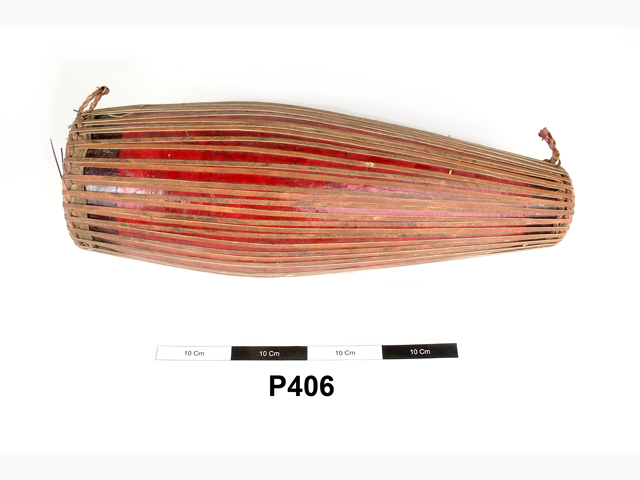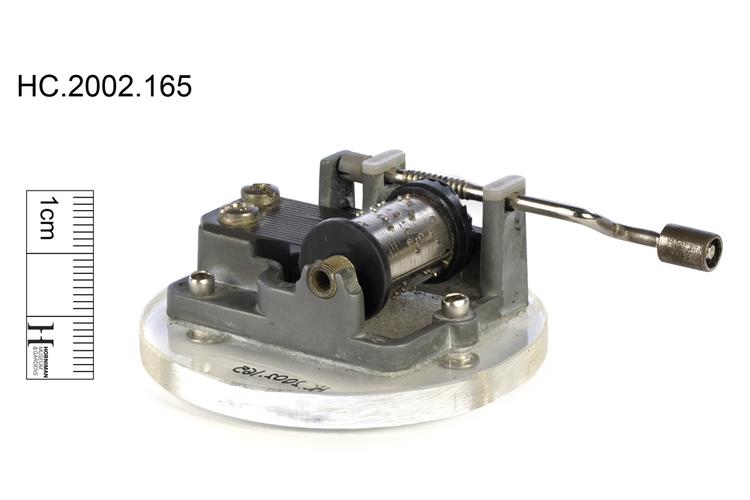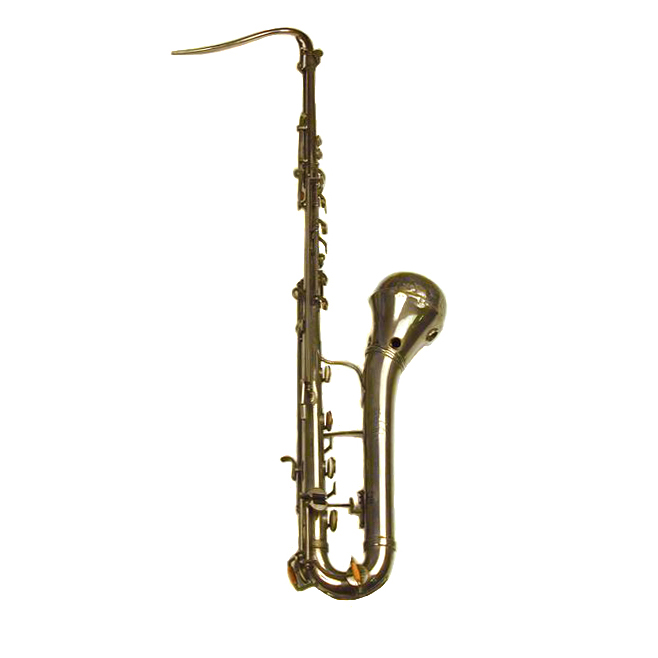
Saxosarrusophone or saxorusofono (Rothophone). Index card reads: Tenor rothphone which has been altered as a substitute for the "heckelphone". Maker: L. Alziati, Milano. [in pencil] Mr S.E. Howarth Esq. c/o Barclays Bank, Bromley, Kent.; Other inded card reads: UNCLASSIFIED "SAXORUSOFONI", LUIGI ALZIATI, MILAN (Lyre and star marks). Bought in Rome in 1946 by G (?) Howarth. Presumably an experimental instrument; essentailly a sarrusophone with the mechanism and fingering of a saxophone. Requires a double reed of cor anglais type. The bell is enclosed by a cap with five holes. White metal (?zinc finish). In B flat (lowest note A). Twentieth century. Clean generally and adjust mechanism. Provide reed. Length overall: 825 mm; Length of tube: circa 1350 mm. Langwill's Index 2.
As its portmanteau name suggests, the saxorusofono is a hybrid instrument incorporating elements of the sarrusophone and the saxophone. The sarrusophone was developed in the early part of the 19th century as an outdoor alternative to the bassoon or the oboe. The saxorusofono has a similar bore profile, crook and double reed to the sarrusophone, but also has an upturned bell and key system similar to the saxophone. The instrument was invented in the first decade of the 20th century by Ferdinand (Ferdinando) Roth, a German instrument maker working in Milan, and was initially named the 'rothphone'. This example was made by Luigi Alziati, another Milan-based instrument maker.



